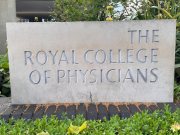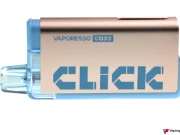A paper recently published in Harm Reduction Journal by renowned public health expert Dr. Lynn Kozlowski, points out that as long as cigarettes remain legal in the U.S., American consumers should be provided with proper information about the relative risks of the different tobacco and nicotine products.
“It is important to distinguish between evidence that a product is ‘not safe’ and evidence that a product is ‘not safer’ than cigarettes or ‘just as harmful’ as cigarettes,” says Kozlowski, who is a professor of community health and health behavior in the University at Buffalo’s School of Public Health and Health Professions.
Kozlowski added that while no product should be considered harmless, consumers should have access to detailed information about the ways in which the different products cause harm. He explained that the 80’s labels came about as a result of a power battle between the smokeless tobacco industry and U.S. cigarette companies.
“The process at the time of the establishment of official smokeless tobacco warnings in the 1980s paid no attention to this distinction,” said Kozlowski. “The American public has become mostly unaware that smokeless tobacco is much less harmful than cigarettes.”
The warnings came as a result of a war within the tobacco industry
In order to gain a clear understanding of the historical context surrounding the labels, the professor reviewed over 400 documents distributed or published between 1964 and 1990. These included internal industry documents, legislative materials and media reports, among others.
Kozlowski pointed out that one thing that stood out in particular was “the evidence that the cigarette industry was concerned about smokeless tobacco being marketed in a way that seemed to promote smokeless as less harmful than cigarettes.”
The FDA needs to step in and improve the warning labels
The professor added that understanding the origins of such labels is still relevant today, with emerging products such as e-cigarettes, adding that the FDA should be working at clearing any confusion surrounding these safer alternatives.
“The FDA Tobacco Law could help improve the warning labels, stop using the ‘not a safe alternative’ warning and mount public education efforts about the harms and differential harms of tobacco/nicotine products,” he says. “Focusing on the ‘no safe product’ message disserves the actual consumers of multiple products who should be aware of differential product risks.”
Read Further: Medical Press



![Recent Conference Urged Nations Worldwide to “Quit [Smoking] Like Sweden”](https://www.vapingpost.com/wp-content/uploads/2024/04/vape-conference-238x178.png)




![Recent Conference Urged Nations Worldwide to “Quit [Smoking] Like Sweden”](https://www.vapingpost.com/wp-content/uploads/2024/04/vape-conference-180x135.png)



